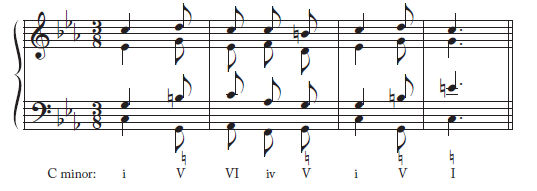Name and briefly describe the two kinds of drums being played in “Nag Biegu” CD 1:13
(See also Figure 3-3, WOM, p. 87).
What will be an ideal response?
• the gungon, a cylindrical drum with a snare (drum skin) on each end
• the luna, an hourglass-shaped drum (also with snares on both ends), which the drummer can alter in pitch by squeezing the leather cords strung between its two drum heads.
• a shoulder strap holds each kind of drum in position to receive strokes from a curved wooden stick.
You might also like to view...
In one sentence, what do local promoters do for a touring act when working with a national promoter?
What will be an ideal response?
Identify the key for each of the following exercises. Add inner voices and a roman numeral analysis. On the first line(s) below each exercise, name the cadence or cadences. On the lines that follow, identify the features of the chord progression that differ from the normal circle of fifths progression. These features include truncated progressions, chord substitutions, retrogressions, unusual chord qualities, and so on. The correct number of lines are provided for each exercise.

James Abbott McNeill Whistler was a follower of the __________ Movement popular in France
Fill in the blank(s) with correct word
Which of the following statements is not true?
A. A concerto grosso normally involves a large group of soloists accompanied by an equal number of supporting players. B. The first and last movements of concerti grossi are often in ritornello form, a form that features the alternation between tutti and solo sections. C. A concerto grosso presents a contrast of texture between the tutti and the soloists, who assert their individuality and appeal for attention through brilliant and fanciful melodic lines. D. A concerto grosso normally involves two to four soloists, and anywhere from eight to twenty or more musicians for the tutti.